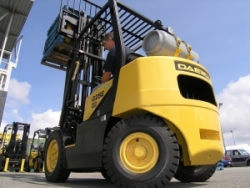
Whenever you see or hear the term, “incorporated by reference” used in context with regulations that refer to any number of industry standards, it means that the referenced standard carries as much weight as a regulation. In other words, OSHA can hold you accountable for certain consensus standards that you may not even know of!
Consider the following wording taken from OSHA 29 CFR 1910.6 where it states… “The standards of agencies of the U.S. Government, and organizations which are not agencies of the U.S. Government which are incorporated by reference in this part, have the same force and effect as other standards in this part. Only the mandatory provisions (i.e., provisions containing the word “shall” or other mandatory language) of standards incorporated by reference are adopted as standards under the Occupational Safety and Health Act. ”
What this basically means is that any of the NFPA, ANSI, ASME, ASTM, SIA, SAE, and UL standards that have been incorporated by reference of OSHA regulations are your responsibility to comply with. Be sure you know exactly which sections of these standards have been incorporated by reference as this is a VERY specific standard, but none the less one that is not widely known. I encourage you to take a few minutes and check this standard out.
There are some who do not believe that OSHA can or will hold your place of employment responsible for compliance with those consensus standards they have “incorporated by reference”. For those people, here is a bit more information from a 2001 OSHA Letter of Interpretation regarding this matter.
Question 1: What is the significance of ANSI standards with respect to OSHA requirements?
Answer: A number of ANSI and other industry consensus standards have been adopted as OSHA requirements. 29 CFR 1926.453 Aerial Lifts (previously numbered §1926.556), which is part of OSHA’s construction scaffolding standard, Part 1926 Subpart L, is one example where OSHA incorporated by reference an ANSI standard. This provision, which was originally promulgated under the Construction Safety Act and then adopted as an OSHA standard in 1971, requires that aerial lifts be designed and constructed in accordance with ANSI A92.2-1969, titled Vehicle Mounted Elevating and Rotating Work Platforms. Industry consensus standards can also play a role in evaluating employer responsibilities under section 5(a)(1) of the OSH Act, also known as the General Duty Clause. That provision requires employers to “furnish to each of [its] employees employment and a place of employment which are free from recognized hazards that are causing or are likely to cause death or serious physical harm to [its] employees.” Industry consensus standards can be evidence that an industry recognizes a hazard and that there are feasible means of correcting the hazard.
Question 2: Where an OSHA standard incorporates an old consensus standard, what is the significance of an updated ANSI standard for OSHA requirements?
Answer: Under OSHA’s de minimis policy, where OSHA has adopted an earlier consensus standard, employers who are in compliance with the updated version will not be cited for a violation of the old version as long as the new one is at least equally protective. Remember, though, that where an OSHA standard incorporates an earlier consensus standard, the only way the OSHA standard can be changed to adopt the new version is through rule making. For example, as stated above, the aerial lift standard references ANSI A92.2-1969. Even though ANSI A92.2 has been revised, the OSHA aerial lift standard continues to require only compliance with the 1969 standard. Subpart L, which was published in 1996, contains a non-mandatory appendix that lists the A92-1990 and 1993 consensus standards that are considered to provide employee protection equivalent to ANSI A92.2-1969. Appendix C reflects the proliferation of equipment-specific ANSI standards since the adoption of the 1969 document. Employers complying with these later versions are considered to have provided protection equivalent to the 1969 requirements.
This is a very significant interpretation because as you can see, employers can be held responsible for safety issues and/or hazards despite the absence of a specific regulation. In addition, there isn’t a regulatory jurisdiction around, even outside OSHA that does not contain some kind of wording similar to OSHA’s General Duty clause (Section 5(a) of the OSH Act).
Without quoting things chapter and verse here, general duty wording basically addresses any type of situation that presents a risk or danger to any worker. Employers are expected to seek out such risks and take steps to eliminate or minimize the risk. This may involve the incorporation of manufacturer’s instructions and information AND applicable industry standards that are incorporated by reference or not!
So, don’t get into an if-it-isn’t-written-it-isn’t-so mind set when it comes to regulations. An if-it’s-dangerous-get-it-fixed-or-don’t-do-it mind set is a much safer one to adopt.
Rob Vetter
Director of Training
IVES Training Group
Did you enjoy this article? Sign up for our newsletter to receive more like this!